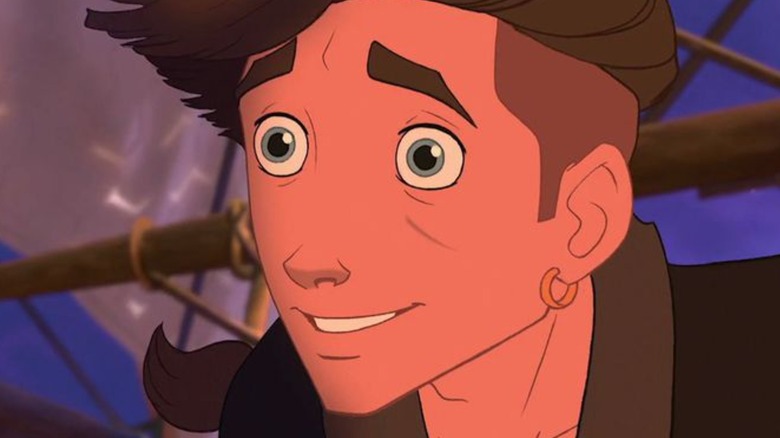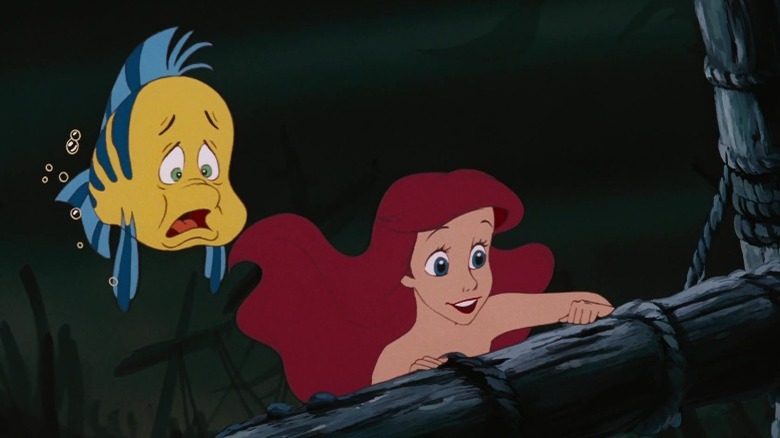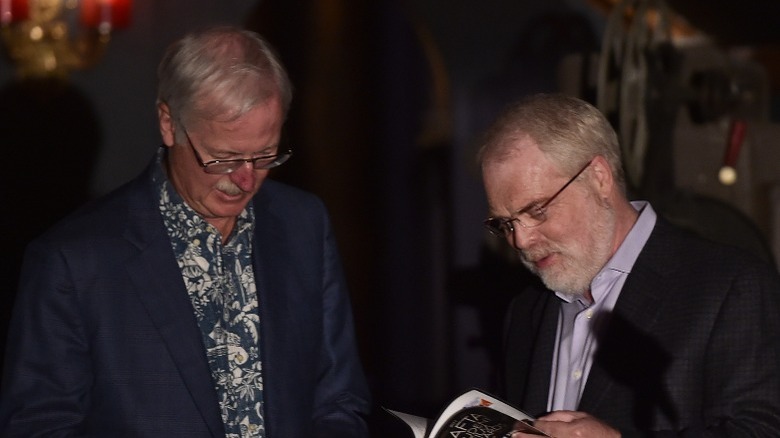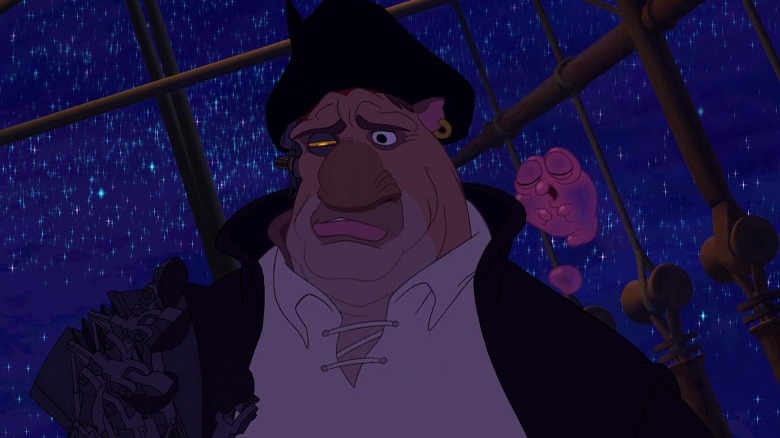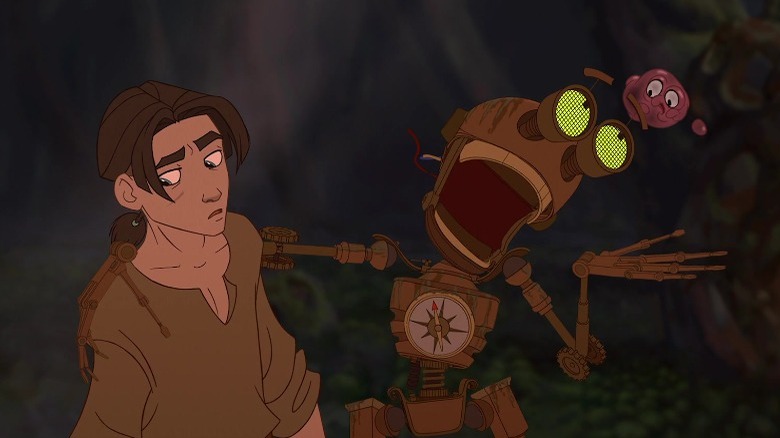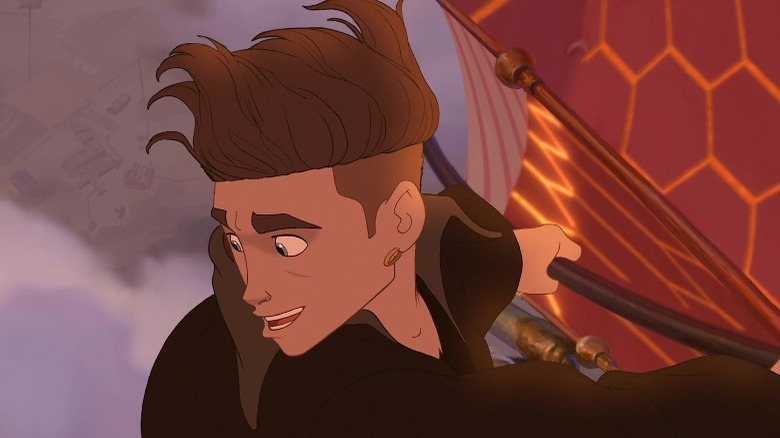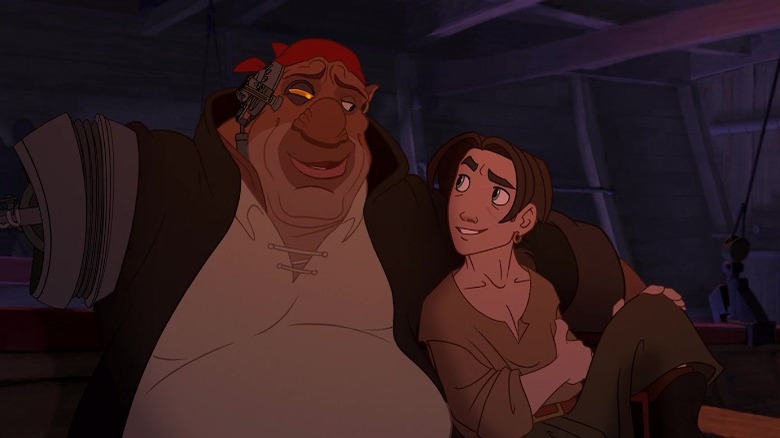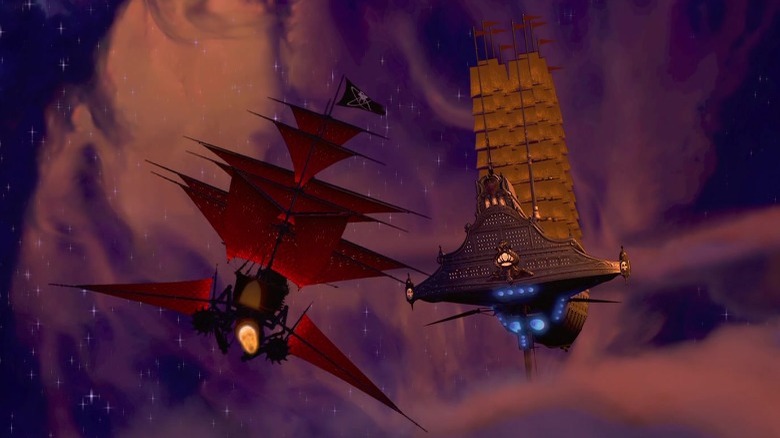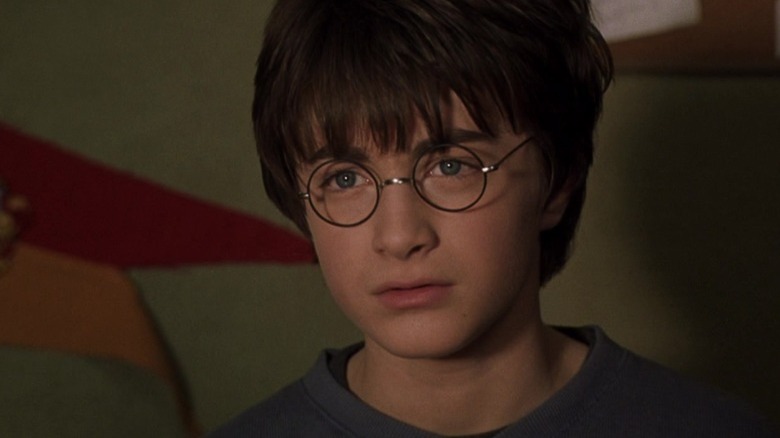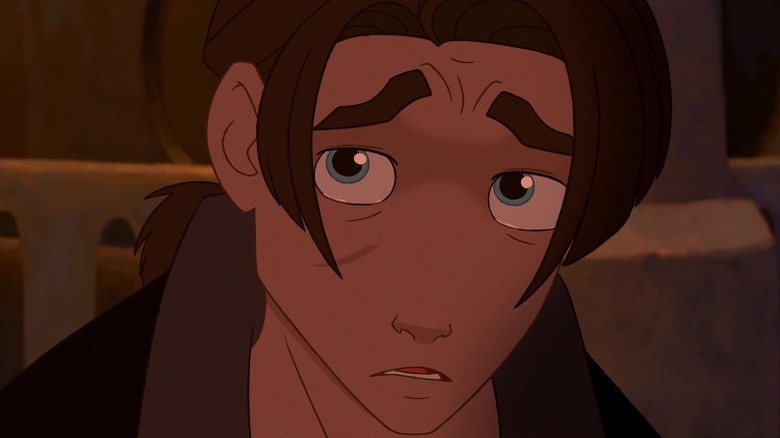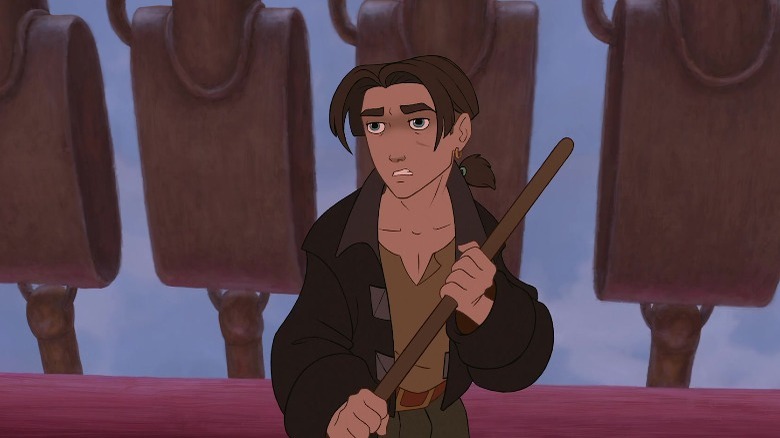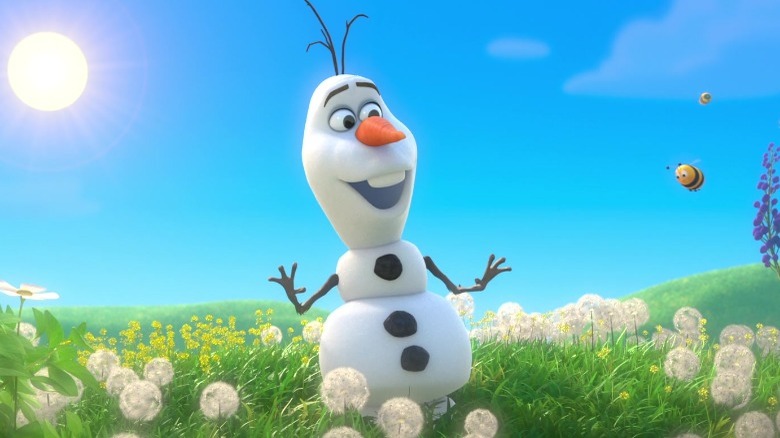Treasure Planet: The Complicated History Behind Disney Animation's Biggest Flop
Many people might not remember "Treasure Planet” as it could hardly be considered a Disney classic. Released in 2002, it was created by the same team that had been in charge of hits like "The Little Mermaid" and "Aladdin," meaning it had a strong pedigree. But the project took years to make and was only put into production almost a decade after it was first pitched. When it finally launched in cinemas, it proved to be a financial flop and changed Disney's entire approach to animated films going forward.
Based on Robert Louis Stevenson's novel "Treasure Island," it is essentially a retelling of the classic pirate tale in space. Disney had released two previous adaptations of that story — the commercial hit 1950 version and the beloved Muppets version — and upon its release, this animated movie failed to match the lofty heights of its predecessors. In fact, "Treasure Planet" failed to make back its budget and marketing costs, costing the company millions of dollars. Exactly why that was the case is a difficult question to answer, as "Treasure Planet" has a long and complicated history. A pioneering project in many ways, it also had a strenuous production and even caused a major dispute within Disney. Here's everything you need to know about the 2002 film and its effect on the movie industry.
The idea for the film was originally pitched back in 1985
"Treasure Planet" had a long production time, taking almost five years to complete, but its history goes back even further than that. In fact, the idea for the film was originally pitched almost 20 years earlier, in 1985. Speaking to Film Scene Magazine, producer Roy Conli explained how director Ron Clements had wanted to make an adaptation of "Treasure Island" in a futuristic science-fiction setting. He and John Musker had originally pitched the general concept of what would become "Treasure Planet" at the same time that they suggested "The Little Mermaid," with Disney executives choosing the more traditional princess-themed project.
This all happened at a so-called Gong Show organized by Michael Eisner and Jeffrey Katzenberg (via Cartoon Brew). This was the first event of its kind at Disney and was designed to allow animators from throughout the company to pitch several ideas that could be developed into animated features. The executives turned down both ideas from Clements but the director was able to get approval for "The Little Mermaid" after sending a treatment to Katzenberg separately. Yet the "Treasure Planet” concept was left behind as Musker and Clements began work on the musical adaptation of the Hans Christian Andersen story. Katzenberg thought the story wouldn't adapt well to animation and also worried "Star Trek" producers were trying to tap a "Treasure Island" angle for a follow-up "Trek" film. This would be the beginning of the struggle to get that project moved into production, a process that would go on for years.
John Musker and Ron Clements helped revive Disney's animation fortunes
Ron Clements and John Musker played a huge role in reviving the fortunes of Disney. Following the death of Walt Disney, the animation studio went through a turbulent time and from the 1970s onwards failed to launch any major blockbusters (via Nerdist). The likes of "Robin Hood” were not financial hits or particularly well received by critics, leading to questions about the future of Disney as an animation powerhouse. Things only got worse with the release of "The Black Cauldron," a hugely ambitious film that was based on the Lloyd Alexander book series "The Chronicles of Prydain." It ended up being a box office bomb that almost put the future of the company in doubt, in large part due to the darker storyline and last-minute changes — although it has become something of a cult classic in more recent times (via Pop Optiq).
Clements had worked on a number of Disney projects before "The Little Mermaid," including "The Fox and the Hound," and even had a short stint working on "The Black Cauldron" with Musker. The pair had met while working on "The Fox and the Hound," where Musker worked under the supervision of Clements. The two would team up for "The Great Mouse Detective," a 1992 film where they were joined by two other directors (via WaltDisney.org). While working on that film, the pair also directed "The Little Mermaid," a return to the traditional musical fairy-tale genre that made Disney famous in the first place. It proved a box office hit and earned critical acclaim.
The movie eventually caused an internal struggle at Disney
After initially pitching "Treasure Planet" back during that infamous gong show, Musker and Clements were determined to get the film made one way or another. They approached Jeffrey Katzenberg several times in the following years. During that time, they worked on "Aladdin" and "Hercules," with the understanding that they would eventually be allowed to start on their own passion project (via Polygon). When it became clear that Katzenberg seemingly had no intention of greenlighting "Treasure Planet," the pair appealed directly to Disney chairman Roy E. Disney. Liking the idea, he supported the project, and the path was ultimately set that they would be able to make "Treasure Planet."
The internal struggle was not a minor tiff either. Michael Eisner told The Hollywood Reporter that Disney had made it clear that Katzenberg had to go and should under no circumstances be made president of the company. Whether "Treasure Planet" played a huge role in this dispute isn't clear, but Katzenberg was later forced out of Disney in 1994 and would go on to found DreamWorks Animation. Musker and Clements had also used their own contract situation to their advantage, with the possibility that they could also leave Disney if they weren't given permission to start work on the ill-fated film.
Treasure Planet proved difficult to complete
When it finally came to creating "Treasure Planet," Musker and Clements did not face an easy job. Speaking to IGN, the two directors explained how some at Disney had issues with how the story would manifest and how the writers should approach the tale. They said, "The story doesn't have a romance, and we never saw it as a musical — those were never articulated, but those may have been some of the issues."
Meanwhile, in an interview with Scene Magazine, producer Roy Conli explained how it took more than five years in total to get the film through production. He went on to describe it as a "true hybrid film" as "50 percent of it has been done on the computer and 50 percent of it has been done by hand." That meant that these two different methods had to blend together seamlessly.
In the same interview, Conli revealed how an estimated 400 artists alone had worked on "Treasure Planet." Meanwhile, hundreds of other people also were part of the production staff, with Conli also stating that "I think there are 1,027 people on my screen credits." That made it a massive undertaking for Disney and also cost them an estimated $180 million to create and promote (via the Los Angeles Times).
Executives and insiders at Disney had issues with the plot and characters
Before "Treasure Planet" was even close to being released, some people inside Disney had expressed doubts. One notable critic was Michael Eisner, a man who had only pushed to have the film made at the behest of Roy E. Disney. According to the Los Angeles Times, after seeing an early cut of the film, he expressed doubt about the direction that the film had taken but at that point, it was too late to make changes without causing a significant delay.
Others also had concerns about "Treasure Planet," with a frequent issue being the main character of Jim Hawkins, voiced in the film by Joseph Gordon-Levitt. Many within Disney were unconvinced about whether this protagonist would appeal to audiences as he was seen as grating and too moody to be relatable. Another notable problem was with the story itself — which was written by Clements, Musker, and Rob Edwards — and was widely believed to be unmemorable, especially in the second half of the film, which insiders reportedly thought lacked any emotional investment.
Speaking to the BBC, Edwards revealed how it was a difficult task to translate the story of "Treasure Island" to a futuristic science-fiction setting without losing the charm of the original story. The team also felt that the narrative would no longer work with Jim Hawkins staying at his original age, making him a teenager in an attempt to modernize him.
It moved away from Disney animation traditions
As mentioned previously, Disney went through a renaissance in the late 1980s and 1990s. The company had a string of hits throughout the next decade or so, such as "The Little Mermaid," "Beauty and the Beast," "Aladdin," "The Lion King," and "Pocahontas." All of these were traditional animations that fit in with Disney's earliest work, musicals that often have a fairy-tale element or are based on an established story. But that all began to change in the 2000s.
Princesses and sing-along tracks were on the way out as the company attempted to switch up its approach and remain relevant in a modern world (via Mashable). Stephen Anderson, from Walt Disney Television Animation, told the site that Disney executives wanted to "offer the audience something different and fresh, because it did seem like maybe that tried-and-true formula was getting a little stale."
A lot of this change in direction came because of the success of both Pixar and DreamWorks, with Michael Eisner determining that the standard formula for Disney films was no longer working and was in a decline (via Den of Geek). That led to a series of films, such as "Treasure Planet," "The Emperor's New Groove," and "Atlantis: The Lost Empire," that tried to have a broader appeal.
When Treasure Planet was released, it was a huge flop
It is difficult to understate just how much of a flop "Treasure Planet" was when it came out in 2002. Against a reported budget of $140 million, it made just over $109 million worldwide. That's significantly less than the returns of the films of the Disney Renaissance era, even the less successful ones such as "Tarzan," "Mulan," and "Hercules," all of which grossed over $250 million. Compared to big hitters, like "The Lion King" and its box office receipts of over $1 billion, "Treasure Planet" could only be considered a huge flop.
While some Disney animations have proved unpopular with audiences but have been met with critical acclaim, that was not the case with "Treasure Planet." Reviews were almost universally mixed, with the release achieving a Rotten Tomatoes approval rating of just 69%. That's far from a complete bomb but demonstrates that this particular Disney film failed to land with critics or moviegoers. Much of the criticism was centered on the setting and the way the story of "Treasure Island" had been changed despite the impressive visuals, with Roger Ebert saying, "Why not challenge the kids with a version of an actual book written by a great writer, instead of catering to them with what looks like the prototype for a video game?"
Releasing alongside Harry Potter and the Chamber of Secrets might have been a major cause of its failure
Many films would struggle to hit the ground running in 2002 considering the massive competition they would face from a series of blockbusters. The year saw "The Lord of the Rings: The Two Towers," "Harry Potter and the Chamber of Secrets," "Star Wars: Episode II — Attack of the Clones," and "Men in Black II" all hit cinema screens, while Sam Raimi's first film in the "Spider-Man" trilogy also released. The biggest animated feature was "Ice Age," which more than tripled the gross of "Treasure Planet" (via Box Office Mojo).
According to the Los Angeles Times, Disney executives admitted that the release of "Treasure Planet" in the same month as "Harry Potter and the Chamber of Secrets" may have been a major factor in how it had failed to take off at the box office. The same article also cites another Disney film in the form of "The Santa Clause 2" as also creating competition. This release date couldn't be altered, though, as a marketing deal with McDonald's tied them to November (via Bomb Report). Disney studio chairman Dick Cook admitted that the company may also have failed to promote it effectively.
Screenwriter Terry Rossio felt the directors made a major mistake with Jim Hawkins
In Robert Louis Stevenson's 1883 novel "Treasure Island," Jim Hawkins is a young boy but, as previously discussed, the writers behind "Treasure Planet" aged him to be an older teenager as a way of trying to create a cooler, more modern protagonist. This decision may well have been one of the major elements that led to the film becoming such a big failure, at least according to screenwriter Terry Rossio.
The prominent figure, who has co-written the likes of "Aladdin" and "Shrek" along with the "Pirates of the Caribbean" series, wrote on Wordplay about what he thought were the problems with "Treasure Planet." He made it very clear that the age of Jim Hawkins was a major issue. He believed that the charm of "Treasure Island" was that it "is a boy's adventure, about a young cabin boy who matches wits with a crew of bloodthirsty pirates." By making him older, the film loses any sense of real danger and the protagonist is perceived as a "petulant unimpressive teen."
The film could have launched an entire franchise
If "Treasure Planet" had turned out a little differently, it could have spawned an entire media franchise rather than a single standalone film. President of Walt Disney Feature Animation Thomas Schumacher expressed a desire for Disney to expand "Treasure Planet" before it launched, telling Mania that there was a possibility that the studio could release a series of direct-to-video releases and even a potential television series depending on the success of the film. The poor performance of the animated movie led to all of these plans being put on indefinite hold.
"The Tigger Movie" director Jun Falkenstein and "Beauty and the Beast" remake screenwriter Evan Spiliotopoulos had started early development on a potential sequel for around nine months, which eventually came to nothing (via Animated Views). Willem Dafoe was even touted as a possible voice actor for a character in the sequel before it was canceled.
The Submarine Voyage ride at Disneyland was also due to be made into a "Treasure Planet" attraction after initial plans to revamp it based on "Atlantis: The Lost Empire" fell through following the movie's box office failure. According to Theme Park Tourist, Disney eventually settled on turning it into a "Finding Nemo" ride.
Treasure Planet effectively killed traditional 2D animation at Disney
Since its inception, Disney had concentrated on 2D-animated movies. But that has all changed in the last few years. In fact, "The Princess and the Frog," another film helmed by Musker and Clements, was one of the last Disney films to feature hand-drawn 2D animation (though much of the film utilized computer animation, including for the BEN character). That movie was released in 2009, and since then, the company has had mega-hits with 3D animation with the likes of "Frozen" and "Moana."
This was a trend that Disney followed, with DreamWorks and Pixar leading the way when it came to 3D animation, meaning that the company was likely to give up on 2D animation sooner rather than later. However, "Treasure Planet" undoubtedly played some role in killing off this method of filmmaking at the House of Mouse (per The Beauty of Animation). The 2002 movie event obtained many digital 3D backgrounds, showing the promise that the technology had (via Tor).
The failure of "Treasure Planet" and the extreme cost of making it effectively put Disney off 2D animation. It's both more expensive and time-consuming to create an animated film with hand-drawn animation compared to the efficient 3D technology that was becoming more sophisticated in the early 2000s. As noted by MovieWeb, 3D-animated films also seemed to make more money than their more traditional counterparts, forcing Disney to adopt the process going forward.
